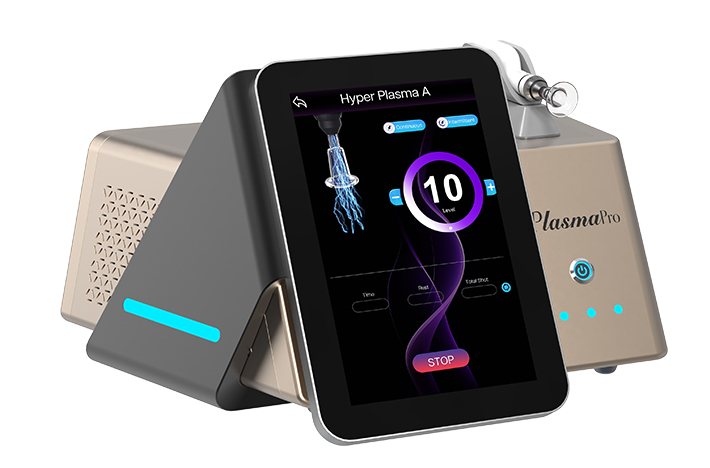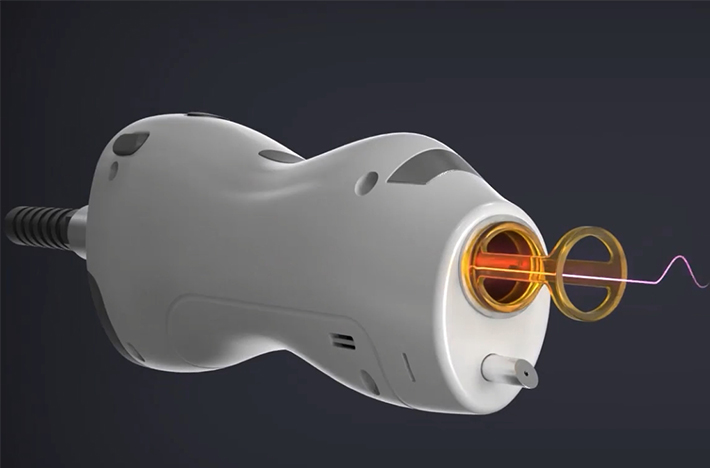The Evolution of Cold Light Plasma Machines in Modern Skin Aesthetics
What is cold plasma machine?
Cold plasma or non-thermal atmospheric plasma is a partially ionized gas produced at close to room temperature (30-40°C). It consists of charged particles, reactive species and photons that interact with biological tissue without causing burns or scarring.
How cold plasma technology different from lasers
While lasers target specific chromophores (e.g. melanin in hair removal), cold plasma has a broader, more biochemical effect. It works by:
Emitting reactive oxygen and nitrogen species (RONS) to stimulate cellular activity.
Modulating the skin microbiome without disrupting the epidermal barrier.
Enhancing product penetration through an electroporation-like effect.
Principles of PS30 plasma technology application
Reactive substances and cell renewal
Cold plasma produces RONS, including ozone (O₃), nitric oxide (NO) and hydroxyl radicals (OH⁻). These molecules:
Stimulate fibroblasts: Increase the synthesis of collagen and elastin by up to 40% in clinical settings.
Activates antioxidant pathways: Upregulates enzymes such as catalase to combat oxidative stress.
Enhances penetration for targeted treatment
The electromagnetic field of plasma temporarily loosens lipid bonds in the stratum corneum, allowing serums (e.g., hyaluronic acid, peptides) to penetrate 3-5 times deeper.
Anti-inflammatory and immunomodulatory effects
By regulating cytokines such as IL-6 and TNF-α, plasma can alleviate inflammatory conditions such as rosacea and eczema.
PS30 Skin care applications
Acne and blemish management
Mechanism: Ozone produced by plasma destroys P. acnes while reducing sebum oxidation.
Better than laser: No cleansing phase or post-treatment dryness.
Pigmentation and melasma
Mechanism: RONS inhibits tyrosinase activity, slowing melanin production.
Clinical data: Melasma patients experienced a 50% reduction in pigmentation over 8 weeks, while those using topical hydroquinone experienced a 30% reduction in pigmentation.
Unique advantage: Unlike fractional lasers, it can be safely used on darker skin tones (Fitzpatrick IV-VI).
Scar repair and texture smoothing
Action: RONS remodels collagen fibers in atrophic scars, such as acne scars.
Efficacy: Combined with microneedling, plasma reduced scar depth by 60% over 12 weeks.
Anti-aging and elasticity enhancement
Collagen induction: Unlike RF microneedling, plasma avoids heat-induced inflammation, promoting faster recovery.
Results: In a 6-month observational study, 90% of users reported improved skin firmness.
Safety and Accessibility
Minimal side effects: transient redness (resolves within 1-2 hours).
Widely accessible: Suitable for all skin types, including rosacea-prone and post-surgery skin.
Cost-effectiveness: Cost per treatment is lower than laser (80-150 vs. 300-500).
Future innovations and trends cold plasma machine
Portable home devices
Emerging handheld plasma pens for daily maintenance (e.g., topical acne treatments).
Conclusion: Redefining skin health with cold plasma
Cold plasma machines represent a major shift in cosmetic dermatology, offering a versatile, non-invasive alternative to traditional therapies. By harnessing the power of ionized gas, this technology addresses acne, pigmentation, aging, and barrier dysfunction with unparalleled precision.







Leave a Reply
You must be logged in to post a comment.